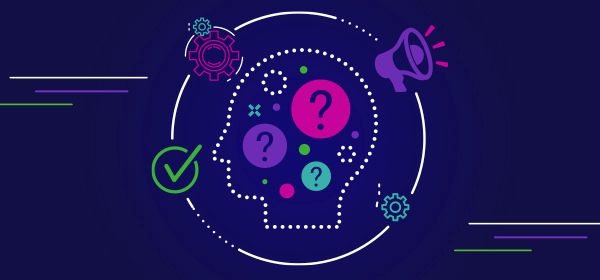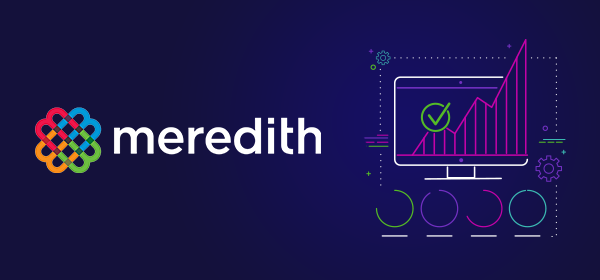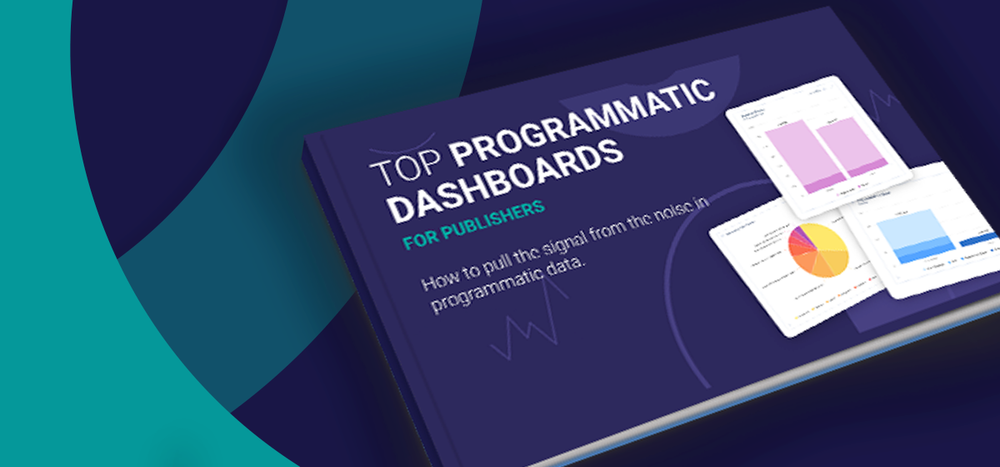Data is growing faster than teams can adapt, and though we all want to be data-driven, it’s extremely tough to make the sweeping culture change needed to support a data-driven identity. Making the change requires learning new skills, a heavy investment in internal infrastructure, and a data-supportive culture. Yet, best-in-class publishers, like Meredith, Disney, and NBCU, are investing in their data transformation and are already seeing valuable returns.
This is not to say that businesses aren’t tracking their performance from P&L down to each department, they are—but being data-driven is not the same as being metrics-driven. Most organizations identify KPIs and goals and track their success along those lines. Being a data-driven organization is different, there’s a certain type of curiosity and critical thinking that is characteristic of every individual employee in their approach to their role and how they think about data to drive their day-to-day activities.
Data literacy is an essential tool for staying competitive
Giving all your employees the power of data makes your entire organization more competitive. In a sense, it expands what each employee can deliver. Think about walking versus riding a bicycle. All your employees know how to walk a.k.a. hitting their goals in a metrics-driven environment. But walking takes time and time is limited. Now, everyone can learn how to ride a bike (be data literate), and with a bike employees can go a lot farther and investigate more paths (opportunities) in the same amount of time. They can leverage their particular specialty and expertise more so on the data-literate bicycle than walking.
Keep in mind that there will be different levels of data literacy as there are with bicycle riding. Some will be so proficient at working with data that they could compete in the Tour de France—these are your employees with PhDs in data science. Others will only be able to ride their bikes around the block, but these people are still able to travel farther and contribute more than before. And, on the whole, your organization will see improved communications and better collaboration, you’ll reach consensus quicker and execute with greater efficiency.
Data, not just for the analysts anymore
Finding an easier path to data literacy is tempting when faced with changing the culture of an entire company (a required step in becoming truly data driven). And even if you’re not consciously looking for a shortcut, without the right structure and foundation in place company-wide data-literacy initiatives may wind up flopping, with the tools and data concentrated in the hands of a small number of data analysts.
Don’t fall into this trap! As Brent Dykes, an award-winning data analytics thought leader, explains it, “data in the hands of a few data experts can be powerful, but data at the fingertips of many is what will be truly transformational.”And, in a TDWI article, Richard Bray, VP of finance and operations at PandaDoc, agrees, “If you can see that by doing XYZ you are moving the company closer to its goals, you feel more connected to these goals. The work then becomes more fun because you understand how your activities are influencing the results. That's very powerful.”
Tools need the right data and the right people
We mentioned critical thinking at the beginning of this post as one of the key characteristics of data-driven organizations. This is an important part of the picture to highlight within the data-literacy umbrella, because it can be easy to superficially check the data box after buying analytics tools/platforms and training your people on it. Regardless of how well your team can use the platform, it’s dangerous to have operators who are unable to check on the underlying data before gathering insights, as you might imagine (or know first-hand) visualizing fragmented data can be a problem.
We find that blind reliance on the data platforms occurs often in the digital advertising industry. Performance data is gathered, visualized, analyzed, insights are drawn, and optimizations are prescribed only to find that the optimizations led to neutral or negative results. Unfortunately, a key step was missed in this process—matching and normalizing the non-standardized ad data—thus the visualization was not representative of reality and the analysis erroneous.
Train employees so they’ll be data literate and critical thinkers. They need to have the ability and curiosity to probe into data sets and audit data-related processes rather than assume what was handed to them or gathered for them is 100% accurate.
So what does this look like in practice? Ask yourself:
- Is this data from a reliable source?
- How was this data gathered?
- Is there additional data that should be included in the data set for my query?
- Has the data been matched and normalized?
- Are there other data sources that can confirm what is reported?
- When presented to the team, will this data tell a complete story with clearly supported insights?
The 4 characteristics of a data-driven company
Realizing the benefits of a data-driven culture requires a certain set of values or characteristics different from those at a metrics-driven organization. These values span across employee training and access, workflow automation, involvement by leadership teams, and decision-making. And in order to make the transformation to a data-driven culture last, the following elements must all work in conjunction:
1. Democratized data
Everyone at your organization needs clarity on their role and purpose and should have broad access to data so they can identify how best to reach their goals and how their activities drive change at the organization. There should be a single source of truth—a tool that will automate the aggregation of data from multiple sources and present a holistic view to eliminate errors associated with manual processes. Automation frees employees to focus on higher-value tasks like analysis, strategy, optimization, and execution. But remember, the processes need to be transparent enough for further investigation if needed.
2. Data literacy
This is the essential skill in a data-driven culture. In an article for Medium, data science thought leader, Piyanka Jain, defines data literacy as, “the ability to read and use data to draw a meaningful conclusion to power decisions.” Remember, there will be different levels of proficiency in any organization, but establishing a base-line understanding of, and comfortability working with, data is needed across the board.
3. Data-driven leadership
As with any company-wide initiative, cultivating a data-driven culture starts with leading by example. This means investing in platforms to create an infrastructure that supports data-driven processes and decision making. Leaders should embody the same curiosity and critical thinking described earlier and even challenge empirical approaches that exist internally. Additionally, they must intentionally build a culture where employees feel comfortable exploring new technologies and proposing their own data-supported hypotheses.
4. Decision-making process
Lastly and obviously, a data-driven culture requires a data-driven decision-making process: develop plans based on numbers, execute, measure, evaluate, and then decide the next set of actions. Automation should speed up decision making and having supporting data should instill confidence. Don’t view issues in silos—remember to gather all relevant data and review findings with other teams to ensure accuracy and effective collaboration. The culture should be open and honest to encourage people to share lessons from success and failure, which helps the entire organization learn and grow faster.
To wrap up
Since you’re interested in a data-driven culture, we hope this article has helped you picture what that change looks like at your organization, and even given you a few ideas for how to get everyone on board. We view data literacy as an essential skill that only gets harder and harder to avoid if you want to remain competitive in any industry or position. It’s a tough thing to transform an entire organization, but the investment has a powerful payoff.
Want to discuss your data strategy? Or bounce some ideas around? Contact us ›






